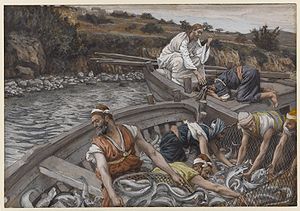
I am continuing here with another quick and easy response because real-life distractions prevent me at this time from addressing Hoffmann’s and Casey’s posts against mythicism. I will address both when work and family situations permit. Right now I am relaxing after sharing with family experiences in Kakadu — plan to return tomorrow some time.
I will also probably say more about Stephanie’s criticism of Carrier’s Bayes’ Theorem, too. But for now my response is light and only concerns what she has to say about me.
Stephanie nowhere addresses my arguments about historical methodology. No-one reading her post would know that this is my main focus in any discussion of Christian origins — and that my focus is on the question of Christian origins rather than mythicism per se. (This latter focus is exactly what Hoffmann himself says he wants to see so one would think that I might be given a little credit for seeing eye-to-eye on such a basic point with “The Jesus Process” folk 😉 I will be addressing Hoffmann’s post as soon as circumstances permit.
R. Joseph Hoffmann appears to be wanting to distance his, Maurice Casey’s and Steph Fisher’s “rebuttals” of mythicism from what they appear to see as crass internet blogging for the ignorant masses — (they pour scorn on the internet and blogging community) — and has presented their posts on his internet blog as a corporate “The Jesus Process”, complete with (unnecessary but pretentious) formal copyright notices. (The “creative commons” license is presumably far too common for these elitists.)
Unfortunately for any hopes that “The Jesus Process” might be taken seriously by anyone but the Hoffmann (threesome?) choir, the hotheaded Stephanie Fisher has been included. Anyone who has observed Stephanie in action with contrary opinions knows she has nothing more to offer than hyperbolic indignation, personal attack, non sequiturs and a stubborn failure to demonstrate any ability to comprehend the views she believes she has to attack.
Misrepresenting Fredriksen?
Stephanie faults me for supposedly quoting Paula Fredriksen’s words out of context. Stephanie at no point presents and dissects my own arguments that relate to mythicist conclusions. Rather, she dregs out issues that bugged her when she was commenting — and finally trolling — on this Vridar blog in 2010 and picks up where she left off. She has learned nothing since, and has no more grasp of what she believed she was opposing back then. She writes:
Atheist blogger Neil Godfrey, an Australian ‘meta-data’ librarian (sic), thus plucked her brief comments completely out of context, and cited her in favour of the opposite interpretation.
Baloney. I did no such thing. And Stephanie does not even attempt to demonstrate how my quotation was “out of context” or how I cited her words for a view opposed their meaning. She does explain what Fredriksen’s context was, and that it was to highlight the Jewishness of Jesus’ heritage. Fredriksen is suggesting that the naming of Jesus’ brethren was an artifice to serve this ideological function. And I fully accept her explanation. I always have.
It was because of Fredriksen’s context — in exactly the way Stephanie herself repeats it — that I chose to refer to Fredriksen’s words. Fredriksen indicates that the names assigned to Jesus’ brothers are not “natural” but an artifice to support an ideological view of Jesus. So I wrote and quoted: Continue reading “Neil Godfrey’s response 2: @ Stephanie Fisher”

